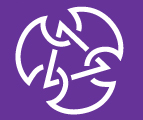
17 Jan Hey! Look at me, I’m grieving!
by Marie Gordon
There are books on practically every aspect of grief except those experienced by women grieving for women. Women whose partners have died. When this happened to me I searched for something – anything – what to do, what not to do, how to cope under the weight of this sledge hammer that had flattened me to pulp. I found nothing.
This is for women who are in this black pit of grief, and who haven’t had that grief acknowledged, much less addressed in the form of words on paper. We are widows, and this is an appeal for compassion, or at least acknowledgment of pain.
An appeal to the funeral directors, who have no space on their relentless forms for ‘partner’. After Jean died, a sympathetic White Lady understood my anger…’ What about me? He – (Jean’s ex of 14 years) – gets top billing, but I don’t rate a mention.’ The White Lady was sorry. ‘Maybe one day…?’ And which day – year – decade – century? We have to do something about that and other anomalies, other slaps in the face.
When your partner/lover dies, you are a widow, a fact not ratified by law and rarely understood by friends and relatives who have been trying to come to terms with your – to them – strange sexuality. They say: ‘Sorry to hear about your friend.’
My friend? If I’d had the strength, I’d have grabbed them by the shoulders and shouted. ‘Yes, she was my friend. She was also my lover, companion, my life. Don’t you dare call her just my friend.’
There are far worse comments overheard…’ It wasn’t like a real partnership.’ Isn’t loving someone more than life itself real enough? Or longing for a magic wand so that it could be you dying, not her?
Where are the books to help us through this time? We should be so lucky. There are not even articles in newspapers or magazines. The articles are written, I know, and not only by me. Written and returned from our ‘women’s’ magazines. There are no organisations to turn to. Compassionate Friends is the answer for most, but not for the widows who aren’t seen as such.
Maybe we should start our own group. There at least the pain would be understood and shared. Maybe, as well as sharing, we could pool our knowledge and experiences and write the book that needs to be written. And not just for us and those like us, but for all women that they might understand that our partnerships are not aberrations. They are loving, caring relationships, not born from a desire to be different, and the love therein is generated into the world, not as a great gesture, but automatically, wondrously.
Maybe we could come up with and promote a symbol of our own. A black tattoo? (Temporary – we don’t aim to make a career out of our grief.) But what kind? Nothing as confronting as the women’s symbol, maybe a black yin/yang tattoo on the arm, neck, forehead, or hand?
The disabled are treated with respect – and deserve to be – because their needs are obvious. We, too, are disabled; we are far from normal. My counsellor expressed it to me this way…’ You are a mossy bank. At the merest hint of sympathy, the slightest pressure, you weep.’ Or, to use another analogy, it’s as if we’re in a capsule that seals us off, but doesn’t protect. So, let’s hear it for our own symbol of grief.
Grieving Aboriginal women cover their faces, and sometimes their arms, in white ash or flour. They speak to no one until such time as they’re ready. Tongan women’s mark of grief is the Kie Kie, a woven grass mat tied around the waist, reaching mid-calf. In western culture, black armbands are sometimes worn. Whatever the mark, it is not a plea for sympathy, it’s a signal which says, ‘Don’t mess with me; I’m fragile. Okay?’






Sorry, the comment form is closed at this time.